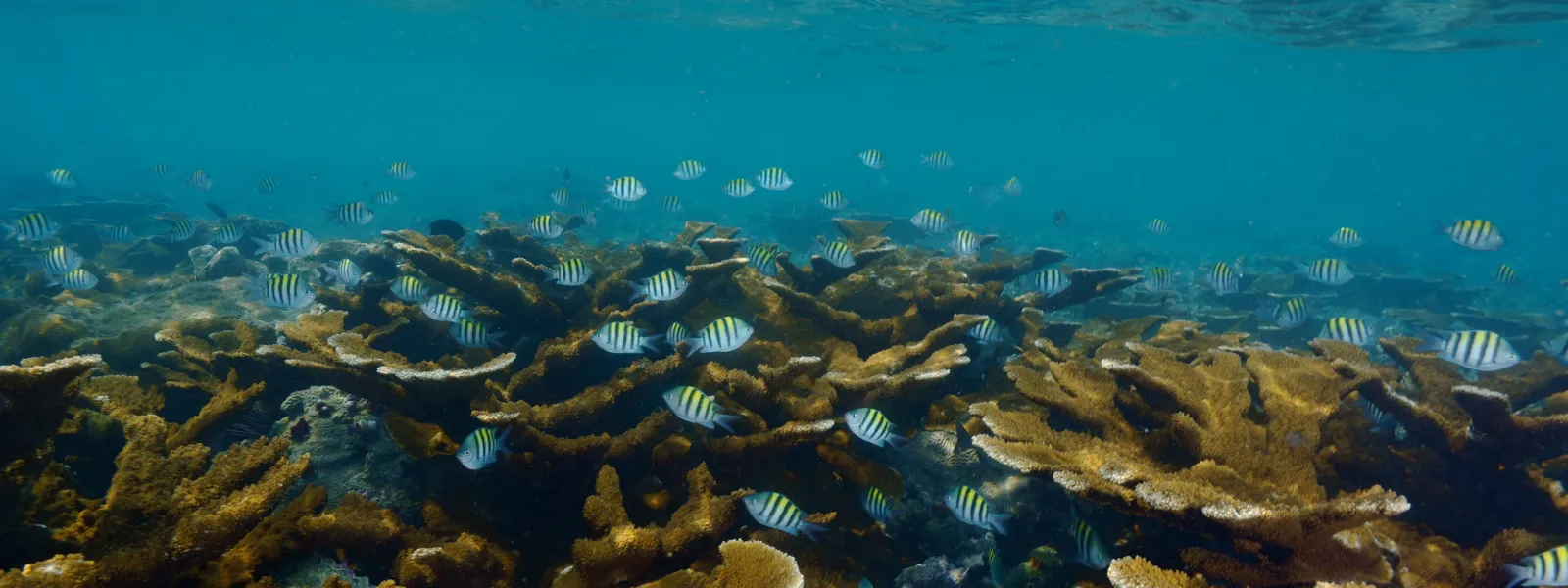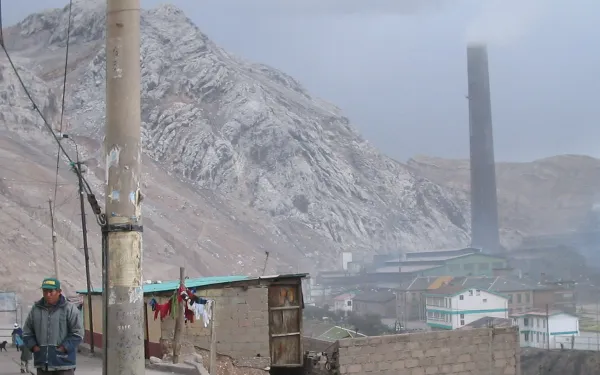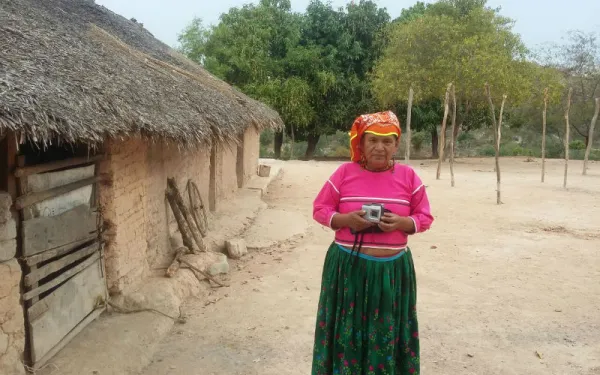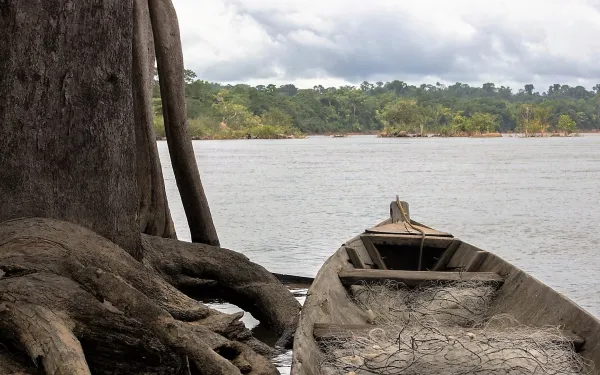
Project
Photo: Manuel VictoriaDefending the Veracruz Reef from a port expansion project
In the Gulf of Mexico, 27 coral reefs form a submarine mountain range running for miles between six islands. Hundreds of colorful fish species, sea urchins, starfish, and sea grasses share the reef with an abundance of other life forms. Fishing, sport diving, and beach tourism thrive along the coast. This is the magnificent Veracruz Reef, the largest coral ecosystem in the Gulf.
In 1992, Mexico’s government declared the Veracruz Reef System a Natural Protected Area. In 2004, it was listed as a Wetland of International Importance under the Ramsar Convention, a treaty for the protection of wetlands including reefs.
Despite the reef’s recognized significance, in 2013 the government reduced the size of the Natural Protected Area and approved a port expansion project. Local communities and organizations challenged the project's environmental permits, demanding protection of the right to a healthy environment.
On February 9, 2022, the Supreme Court of Justice of the Nation unanimously decided that the authorities violated the right to a healthy environment of Veracruz residents by authorizing the port expansion based on a fragmented environmental impact assessment. This means that the permits for the project are non-existent and that the impacts of the project on the health of the reefs must be studied again, this time in a comprehensive manner, and even the viability of the project.
The ruling is a historic precedent not only in Mexico, but for the entire region, as it allows access to environmental justice for the people neighboring an ecosystem affected by a project.
Partners:

Related projects

IACHR urges Peru to protect 14 additional people affected by pollution in La Oroya
The Commission did so by extending the precautionary measures originally granted in 2007. The decision arrives six years after it was requested, and confirms the severity of health deterioration in La Oroya. It also confirms that the life and integrity of affected people are at risk, and require urgent and adequate protection by the Peruvian State. Washington DC, USA. The Inter-American Commission on Human Rights (IACHR) urged the Peruvian government to protect the life and integrity of 14 additional people affected by toxic pollution in the city of La Oroya. They join the 65 people already protected by precautionary measures granted by the international body in 2007. The decision reaffirms that the health of the beneficiaries has deteriorated severely, they continue to be at risk, and their government must provide prompt and adequate care. The Interamerican Association of Environmental Defense (AIDA)—together with the Asociación Pro Derechos Humanos (APRODEH), the Centro de Derechos Humanos y Ambiente (CEDHA) and Earthjustice—represents the victims who benefit from the precautionary measures before the Commission. We express our satisfaction with the Commission’s decision, which arrives six years after it was originally requested. A metal smelter operated by Doe Run Peru is the source of the heavy metal contamination in La Oroya. The Commission has established that the lack of integral and specialized medical care, as well as health deterioration over time, could affect the right to life and integrity of the beneficiaries of the precautionary measures, which now number 79. “The extension of the precautionary measures reaffirms the urgent and serious situation threatening the life and integrity of the people of La Oroya. We hope the State fully complies with the provisions in favor of all of the beneficiaries, providing them with adequate and specialized medical attention,” said María José Veramendi Villa, AIDA attorney. The Commission’s decision states that the government of Peru must conduct the medical evaluations necessary to determine the levels of lead, cadmium and arsenic in the blood of affected people, in order to provide them with appropriate medical care, in accordance with international standards. The government must also report on the actions taken to investigate the facts that led to the extension of the precautionary measures, in order to avoid their repetition. Our case on the human rights violations committed against the affected people remains pending the final decision of the Commission. AIDA and APRODEH expect that the report will hold the Peruvian government responsible for said violations.
Read more
Marcelina, the voice of the San Pedro Mezquital
At 57 years old, Marcelina López has a very active life. She sews her own clothes, makes beautiful jewelry, raises chickens, sells eggs, cooks, is a midwife and organizes the women of her community; all while faithfully conserving her traditions, those of the indigenous Wixárika people. Perhaps what distinguishes Marcelina most is her great character and conviction, qualities that have rooted her deeply in a grand cause: the defense of Mexico’s San Pedro Mezquital River, threatened by Las Cruces Dam. At AIDA we’re deeply moved by the commitment of Marcelina and honored to be part of the same fight. Just like her, we want the San Pedro—the only free-flowing river left in the western Sierra Madre Mountains—to run free. We’ve been inspired to know more about this incredible woman, and to understand why she does what she does. Colors of the Sierra Madre Marcelina lives in a house made of mud, built high upon a hill, in a small community in the state of Nayarit. To go anywhere from her house, she has to walk an hour and a half through the mountains. She travels everywhere on foot. There’s no doubt Marcelina is a special woman. Everyone in the region knows her; she is unmistakable. She has the look of a wise indigenous woman, the bright colors of her clothes equal only to those of the beaded necklaces she wears each day. She herself colors the beads; they are a symbol of the importance of her culture. She often wears a head wrap, which gives her an air of certainty and connotes rich ancestral wisdom. Though her profound presence can seem serious, Marcelina is a very sweet and loving person. Over the years, Marcelina has not been immune to violence and machismo, in its many expressions. She has had to fight to have her voice recognized in agrarian assemblies, and, for a time, had to provide for her children as a single mother. Her people, the Wixárika—known in Spanish as the Huicholes—are a majority group in Nayarit. They live in the western central region of Mexico, in the Sierra Madre Mountains; they primarily populate the states of Nayarit and Jalisco, but are also represented in parts of Durange and Zacatecas. In their native tongue, belonging to the family of Uto-Aztecan languages, wixárika means “people.” For the Wixárika, ceremonies are fundamental to the social wellbeing of the group. It is through these sacred rituals that they ask for rain, give thanks for the harvest, bless its fruits, and pray for health and vitality. Their ceremonies are, in short, where they celebrate and honor life. For Marcelina and her people, the San Pedro Mezquital is the pillar of social, spiritual and economic life. Its waters support their subsistence farming and fishing activities; 14 of their sacred sites are spread along its length. What’s more, the river feeds Marismas Nacionales, one of the most important mangrove forests in all of Mexico. This important source of life and culture is threatened now by the construction of Las Cruces Dam, a project being proposed by the Federal Electricity Commission. The megaproject would be located 65 kilometers north of the city of Tepic. It would have a capacity of 240 MW, divided between three generators. The dam would effectively stand as a 188-meter high concrete curtain. Speaking for the river In her excellent Spanish, accented with clear links to her indigenous roots, Marcelina has on various occasions stood before microphones and cameras to defend the San Pedro River and the lives of those who depend upon it. “The construction of this dam will have a severe impact on our culture and our spirituality. Many of our ceremonial centers are located along this river,” she explained. “It is there that we leave our offerings of thanks; it there that we pray, not just for our own community, but for the entire world.” When asked why she decided to be part of the movement in defense of the San Pedro, Marcelina responded: “As an indigenous women, I’m hurt that they want to take away our river. What’s happening? Why didn’t they consult us indigenous people [about the project]? Where is their respect? Why are we treated this way?” Her questions remain unanswered. The construction of Las Cruces will have negative impacts on the land, its natural resources, and the way of life of the indigenous people who depend upon it. The dam will flood 4,506 hectares; the town of San Blasito, sections of communal land, at least 14 sacred sites, and one ceremonial center, will all be under water. “We are the roots of Mexico,” Marcelina concluded. “It’s not easy for us to change our sacred sites; they’re like a tree rooted deep in the soil. Down these rivers run the blood of our gods.”
Read more
Brazil inaugurated Belo Monte: There’s nothing to celebrate!
The Brazilian government grandly inaugurated the Belo Monte Dam, which sits on the Xingu River in the midst of the Amazon. As an organization that legally represents affected indigenous and riverine communities, as well as residents of the city of Altamira, we consider there to be no reason to celebrate. The dam has been built by overlooking national and international standards that safeguard the environment and human rights. GET TO KNOW MORE about this injustice through the words of our senior attorney María José Veramendi Villa!
Read more